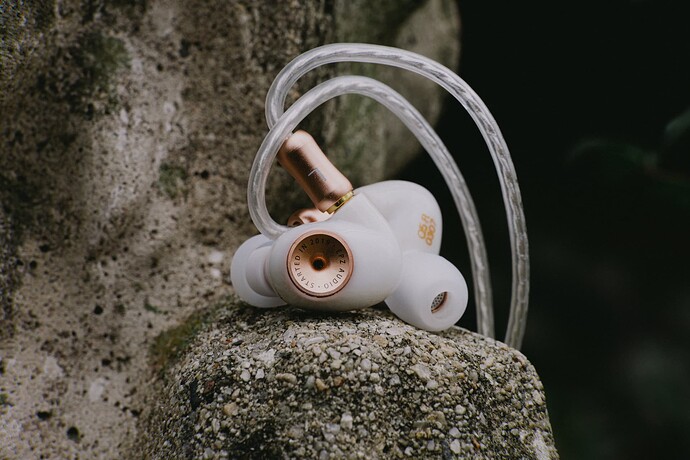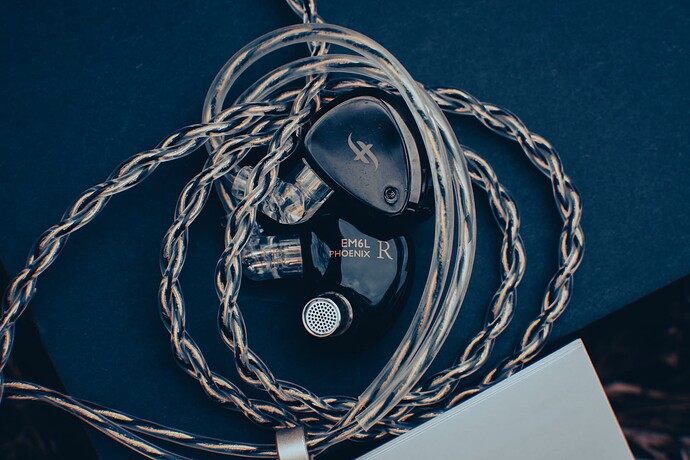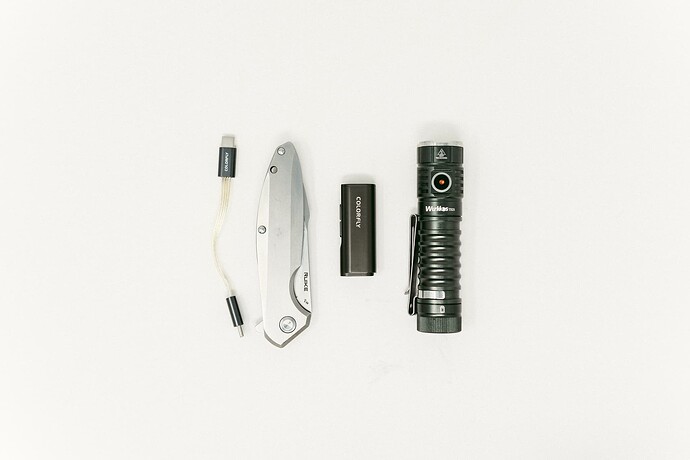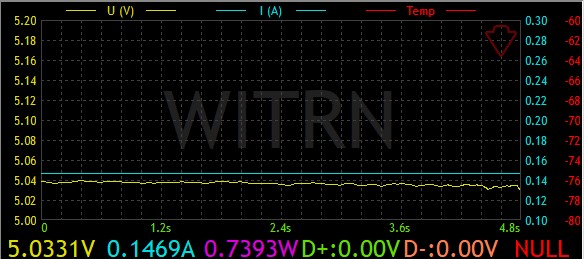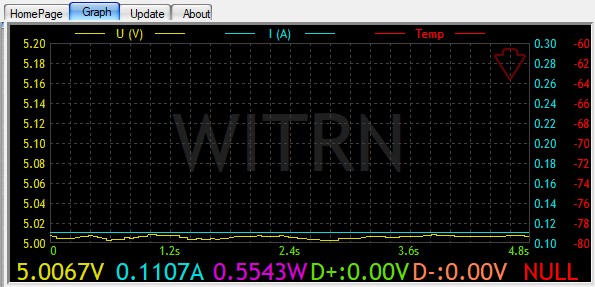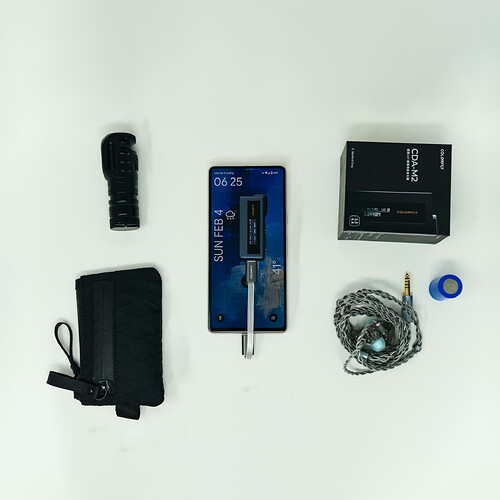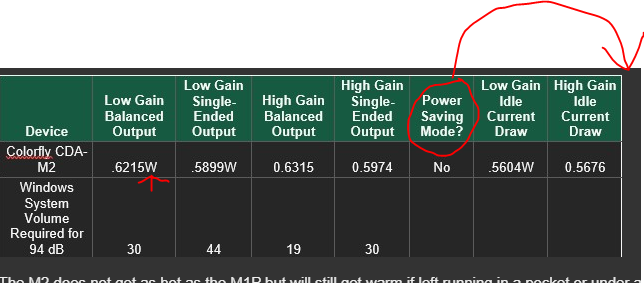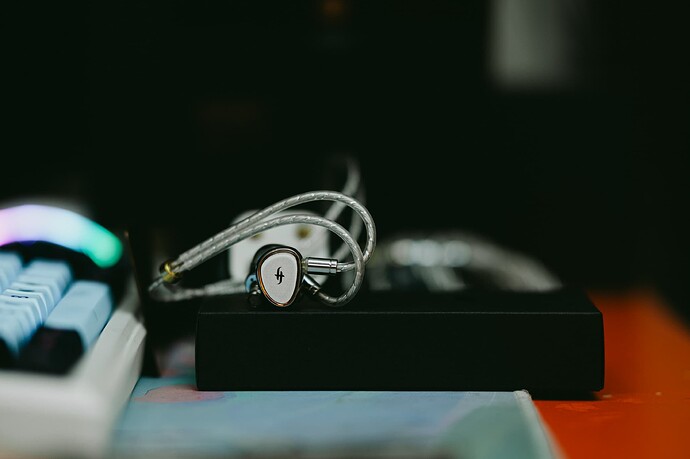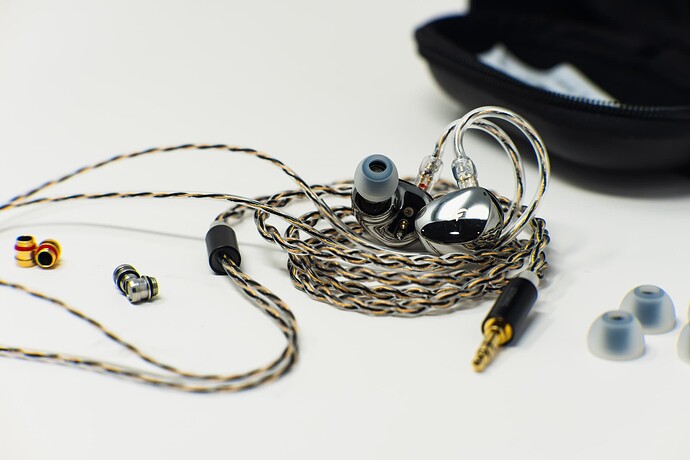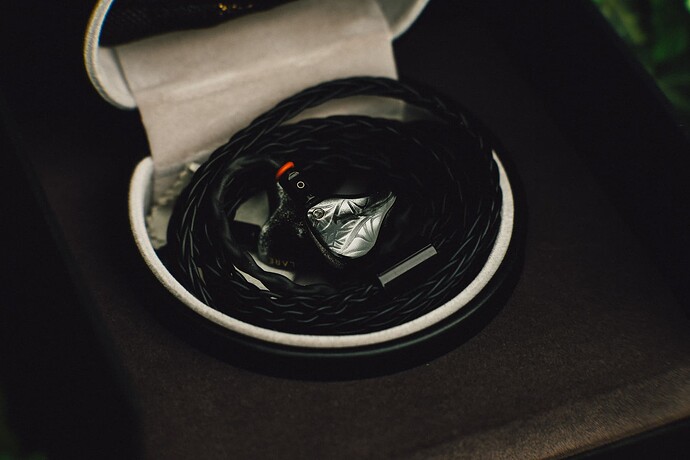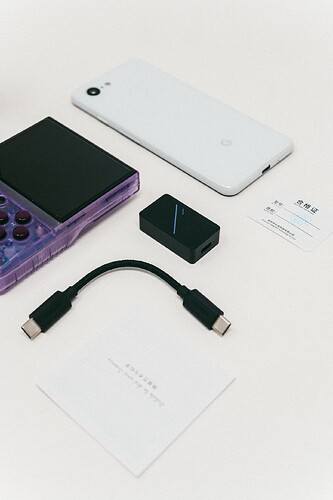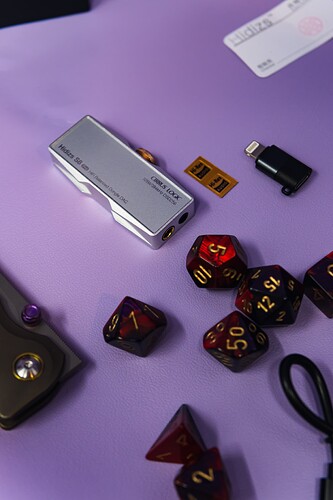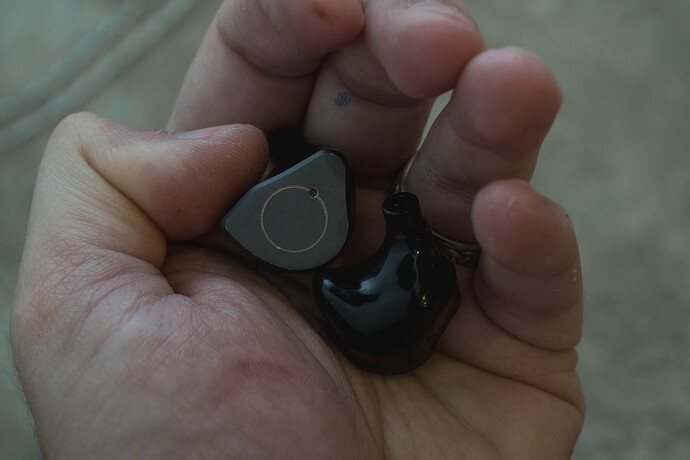IO Audio Volare Review
Introduction and Disclaimer
The IO Audio Volare is an in-ear monitor that employs a combination of one dynamic driver, four balanced armatures (BAs), and four electrostatic (EST) drivers per housing. Retailing for $599, this review unit was provided to me by Shenzhen Audio. I suspect that IO Audio is an in-house brand, akin to the relationship between Thieaudio and Linsoul.
Packaging and Accessories
The Volare arrives in a large square black cardboard box, adorned with a black slipcover. The slipcover provides technical specifications in both English and Mandarin, and also displays B&K 4195-Q and GRAS 45CA-9 measurements of the Volare.
Upon lifting the flip-up box top, a rigid leather carry case embossed with the IO Audio logo is revealed. The earpieces are securely stored in a foam mounting sheet inside the case. For the case to be used, foam inserts in both the top and bottom must be removed. An elastic mesh pocket in the roof of the case provides storage for accessories.
Below the case section of the box, there are three drawers filled with more accessories.
The first drawer contains a thick braided detachable 2-pin cable with interchangeable terminations. All three common terminations (2.5mm balanced, 3.5mm single-ended, and 4.4mm balanced) are included. The terminations feature a notched index point built into the male and female 4-pin connectors and are secured by a screw-on ring cap. I had no issues with terminations coming loose. As an everyday user of a Qudelix 5K, I was pleased to see that the 2.5mm option was not omitted.
All of the cable hardware, including the 2-pin connector housings and the chin adjustment choker, are made of black polished metal or brass. The right side 2-pin connector is indicated by a red O-ring. The cable has preformed black heat-shrink ear guides and lacks strain relief. Without the use of the chin adjustment choker, the cable is quite microphonic.
The second drawer includes a staggering 15 sets of eartips in five different varieties, each available in small, medium, and large sizes. There are four different types of silicone eartips of varying height, shape, and nozzle width, plus a set of foam eartips.
The third drawer contains a user manual, a manufacturer contact card bearing the unit serial number, a warranty card, a quality control pass chit, a small microfiber cloth, and a simple 3.5mm to 1/4" adapter.
Build Quality and Design
My first, and really my only, problem with the Volare is that some of the tolerances are not quite right. The shell molding seems a tiny bit rough in places, such as the nozzles and the circular vents below the recessed 2-pin connector ports. Most annoyingly, the left side 2-pin connector comes loose very easily. It’s fair to assume these concerns could be isolated to early units (mine is one of the first 40 produced), but it’s worth noting given the price tag.
Setting the build quality concerns aside, the physical design is very attractive. The housing bodies are black with inlaid silver glitter. The faceplates are grey with black vine-like designs set behind a clear cover. Silver “I” and “O” are set into the faceplates of the left and right earpieces respectively. The top of the shell is printed with the text “Volare” in gold lettering. The nozzles have substantial lips to secure eartips. I did occasionally have eartips come loose when wearing the Volare to sleep, but not during daytime listening. Each nozzle has three separate sound tubes.
Comfort, Fit, and Isolation
The Volare is very comfortable to wear for extended periods. It has a moderate insertion depth and is low-profile enough to wear to sleep if you feel like living on the edge with a $600 set of IEMs. The security of fit is okay but not great, requiring occasional readjustment. The isolation is moderate.
Sound
IO Volare — Bedrock Reviews (squig.link)
For the most part, the IO Volare exhibits a classic Moondrop Virtual Diffuse Sound Field (VDSF) inspired tuning. It features a moderate sub-bass elevation followed by a gentle downslope through the mid-bass, bottoming out in the lower mids, and a plateau-style elevated upper midrange without an isolated ear gain peak.
The Volare boasts terrific sub-bass extension and excellent bass articulation and resolution while still having very good impact, texture, and dynamics.
The mid-range clarity is excellent, with very good male vocal intelligibility. There’s a decent amount of body to male vocals, though they lack a little in texture and grit. Female vocals are bit bright and foward but are not sibilant. The Volare differs from a lot of VDSF-style IEMs in that its presence region is more forward than most. This results in a tad too much presence for my tastes, not egregious but enough to slightly exaggerate the distortion of electric guitars. While analog percussion sounds crisp and snappy, there is a bit of BA timbre in the midrange.
The lower treble is energetic with well-defined transients. As one would expect, the Volare has much better treble extension than the budget single dynamic driver IEMs that typically opt for this type of sound. Specifically, there is no precipitous treble fall-off after 10 kHz. In fact, there is a pronounced mid treble emphasis, providing plenty of sparkle for cymbal clashes. The upper treble extension is very good, and detail retrieval is terrific. However, I would have preferred more upper treble emphasis, especially above 15 kHz, given the use of ESTs in the design. The soundstage is reasonably open, with excellent instrument separation.
Conclusion
I have nothing substantially negative to say about the sound quality of the Volare at this price point. My one reservation would be the build quality moving forward given my issues with the cable connectors, but looking at other reviews published to date, this seems to be isolated to my unit. Overall, the Volare is worth its asking price and is an easy recommendation for anyone looking for a rationally-tuned IEM in the $600–900 price range.
The IO Audio Volare can be purchased at the link below:
IOAUDIO VOLARE 1DD+4BA+4EST In-Ear Headphone (shenzhenaudio.com)
